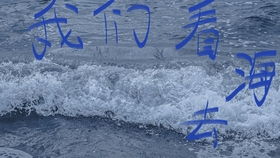Winter fishing can be a challenging yet rewarding experience for anglers. The crisp air, serene landscapes, and the thrill of catching fish in colder temperatures make it a unique pursuit. However, the cold weather brings its own set of challenges that require specific techniques and strategies. Here's a comprehensive guide to help you master winter fishing and increase your chances of success.
Understanding Winter Fish Behavior
Before diving into the techniques, it's crucial to understand how fish behave during the winter months. Cold water slows down fish metabolism, making them less active. They tend to move to deeper, warmer waters and are more selective about their food. Here are some key points to consider:
Water Temperature: Fish are most active in water temperatures between 50°F and 65°F (10°C to 18°C). On colder days, you may need to target deeper waters where the temperature is more stable.

Sheltered Areas: Fish seek shelter from the cold, so look for areas with rocks, logs, or submerged structures that provide protection.
Food Sources: Since fish are less active, they rely on high-energy food sources. Look for areas where baitfish or insects are abundant.
Winter Fishing Gear
The right gear can make a significant difference in your winter fishing experience. Here's what you'll need:
Rod and Reel: A medium-heavy to heavy-duty rod with a fast-action tip is ideal for winter fishing. A quality reel with a smooth drag system is also essential.
Line: Use a monofilament line with a lower rating for better sensitivity and flexibility. A 6 to 12-pound test line is typically sufficient.
Lures and Baits: Soft plastics, jigs, and spinnerbaits are effective choices. For live bait, consider using worms, minnows, or leeches.
Winter Clothing: Dress in layers to stay warm. Include a waterproof jacket, insulated pants, a thermal base layer, and a good-quality winter hat.
Winter Fishing Techniques
Now that you have the right gear and an understanding of fish behavior, let's delve into the techniques:
Early Morning or Late Evening: Fish are most active during these times due to the lower light levels. Aim to fish during these periods for the best results.
Slow and Steady: Since fish are less active, move slowly and make gentle presentations. Avoid sudden movements or quick retrieves.
Deep Water: Target deeper waters where the temperature is more stable. Look for drop-offs, holes, or submerged structures.
Adjusting Lure Presentation: Use lighter lures and slower retrieves to mimic the natural movement of prey in cold water.
Live Bait: Live bait can be highly effective in winter. Attach it to a hook with a small split shot to keep it on the bottom.
Consistency is Key: Winter fishing requires patience. Stay focused and be consistent with your approach.
Winter Safety
Safety should always be a priority, especially when fishing in cold weather. Here are some safety tips:
Layered Clothing: Dress in layers to stay warm and dry. Always have a waterproof outer layer.
Warm Accessories: Wear a good-quality winter hat, gloves, and a scarf to protect your extremities.
Ice Safety: If you're fishing on a frozen lake, ensure the ice is thick and safe. Always carry an ice pick and a safety line.
Emergency Supplies: Carry a first aid kit, a whistle, and a cell phone with a charged battery.
Plan Your Trip: Inform someone of your fishing plans and expected return time.
Conclusion
Winter fishing can be a delightful and productive experience with the right approach. By understanding fish behavior, using the appropriate gear, and employing effective techniques, you can increase your chances of success. Remember to prioritize safety and enjoy the serene beauty of winter fishing. With a bit of patience and practice, you'll soon become a seasoned winter angler. Happy fishing!












